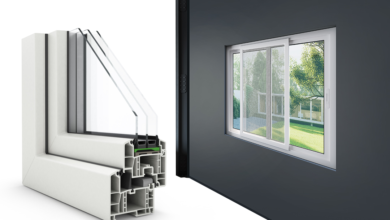Top 5 Things to Consider When Choosing the Best Tint for Home Windows

Did you know that window film can make it possible to turn the lights on and off by pressing a button on your hand-held device? Isn’t that neat?
The simpler the installation and the easier it is to clean, the better it will be for you and your family. You should also choose a UV film that addresses sun fading, bird and bug stains, and heat reduction.
Sounds complicated, right? Fortunately, it isn’t as hard as you might think.
Keep reading to learn how to choose the best tint for home windows.
1. Purpose And Goals
Choosing the best tint for home windows is crucial for achieving your desired purpose and goals. The first thing to consider is the type of tint you need, whether it be for privacy, energy efficiency, or UV protection. Think about the level of darkness you want. Tints come in a variety of shades, so be sure to choose one that meets your needs and complements your home’s aesthetic.
Consider the warranty and home window tint cost to ensure long-term satisfaction.
2. Type Of Window Tint
The first thing to consider is the purpose of the tint – whether it is to block out heat, reduce glare, or add privacy. This will determine the type of tint needed, such as solar, reflective, or frosted tint. Consider the color and darkness of the tint, as darker tints can reduce visibility. It is also important to check the home window tint temperature control.
3. Local Climate And Sun Exposure
When it comes to choosing the best tint for home windows, it’s important to consider the local climate and sun exposure. A highly tinted window may be necessary if your home is constantly exposed to direct sunlight. Consider the angle of the sun during different seasons to ensure the chosen tint will be effective year-round.
Check the UV protection rating of the tint to protect your furniture and prevent UV damage.
4. Visible Light Transmission (VLT)
VLT refers to the amount of natural light that can enter through the tinted windows. A higher VLT will provide more privacy as it makes it harder to see through the windows.
A room used for relaxation might benefit from a higher VLT to allow more natural light in. It can help reduce the need for artificial lighting, hence saving on energy costs.
5. Legal And HOA Restrictions
Check with your local laws and regulations to ensure that the tint you choose is within the legal limits. Keep in mind any restrictions set by your homeowner’s association, as they may have specific guidelines on the type and darkness of tint allowed. Research different types of tint and their benefits to determine which one is best for your needs.
Make sure to properly maintain and clean your tint to avoid any violation of restrictions or potential damages. By considering these things, you can make an informed decision and enjoy the benefits of having tinted windows in your home.
Minimize Your Carbon Footprint With The Best Tint For Home Windows
Choosing the best tint for home windows requires careful consideration of factors such as type of tint, UV protection, cost, installation process, and warranty. By keeping these top five things in mind, you can ensure that you make an informed decision for your home.
Don’t wait any longer; make the best choice for your windows today!
Interested in learning more? Then be sure to explore our blog for all the answers to your questions.
You Might Also Like:



